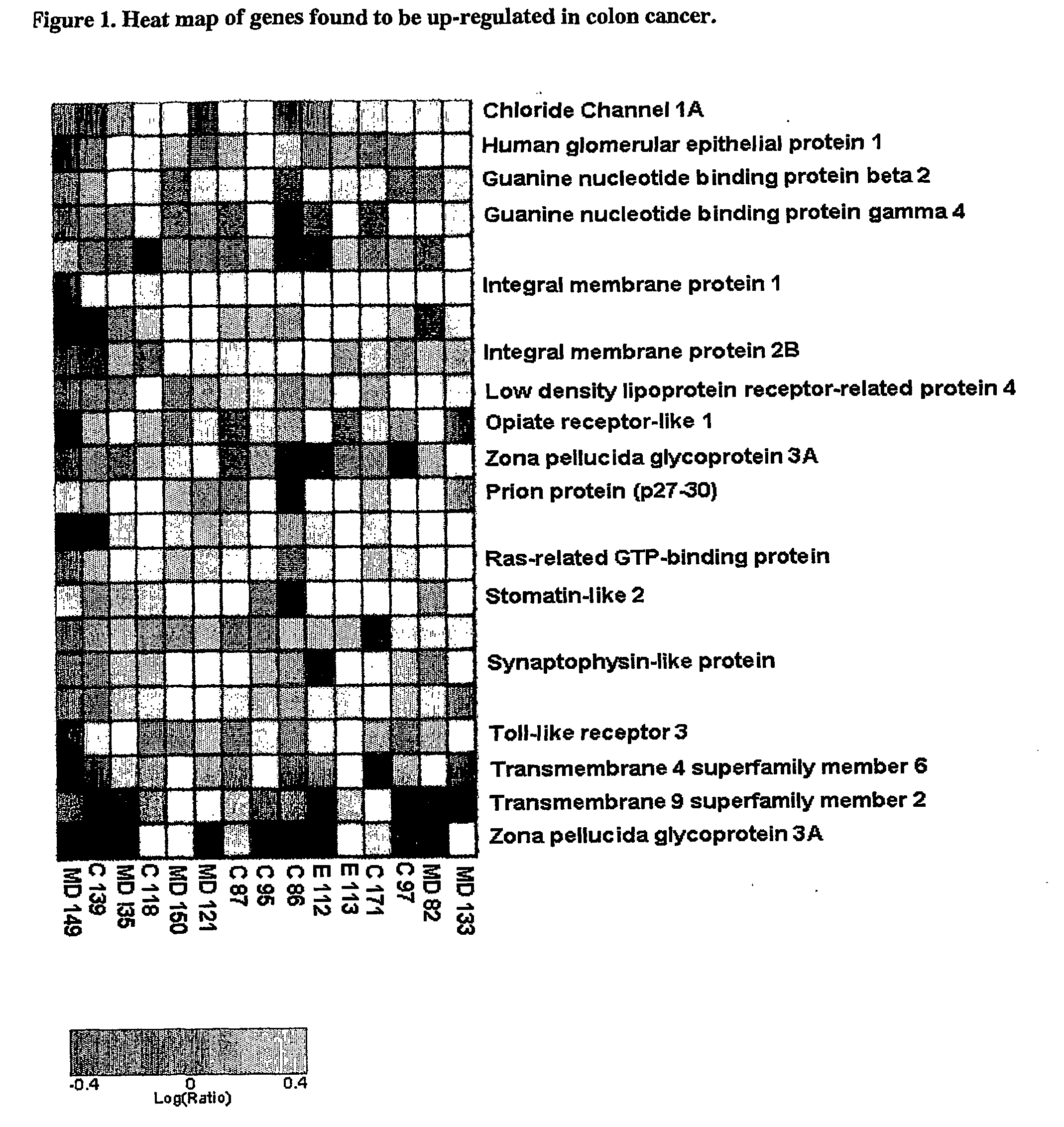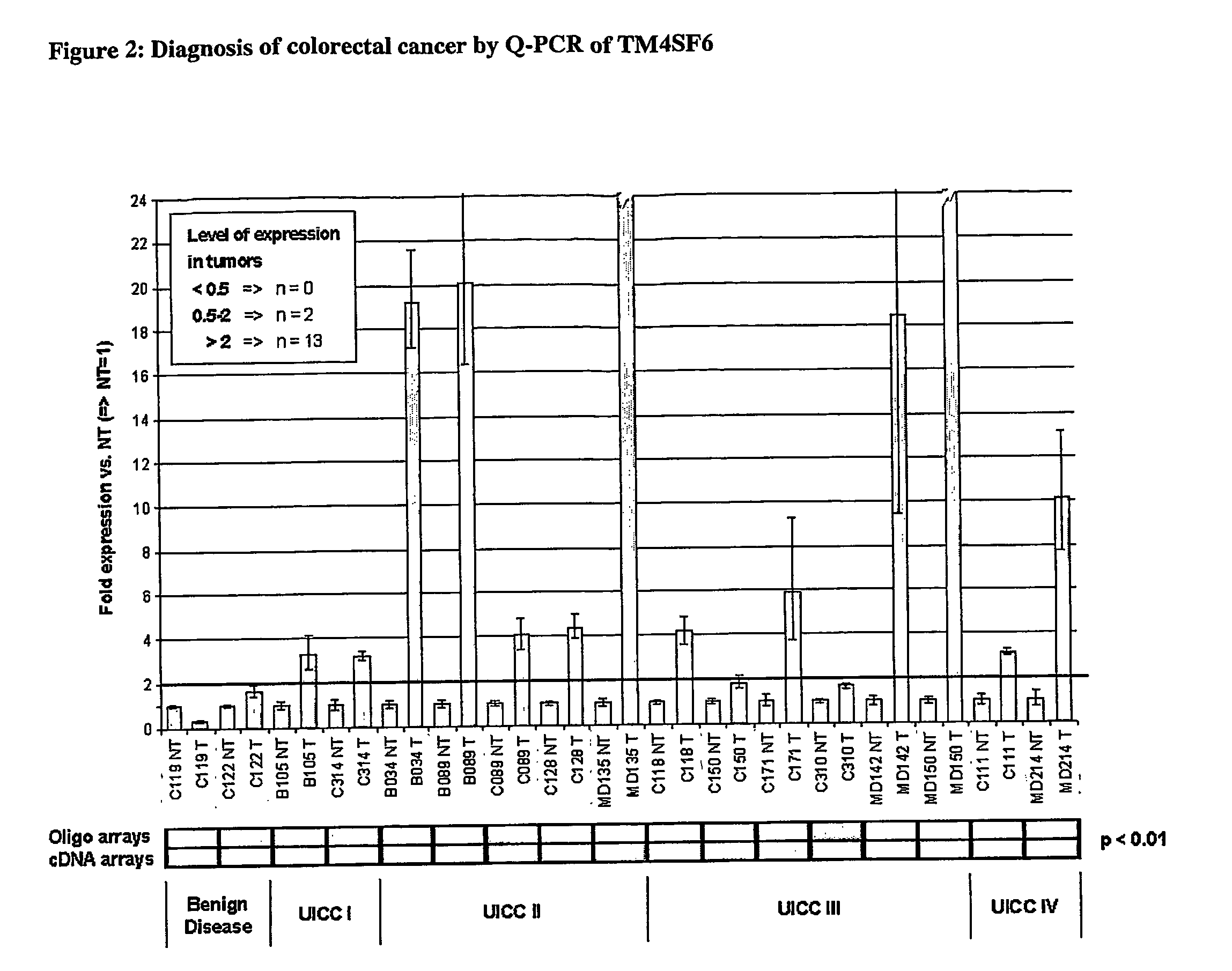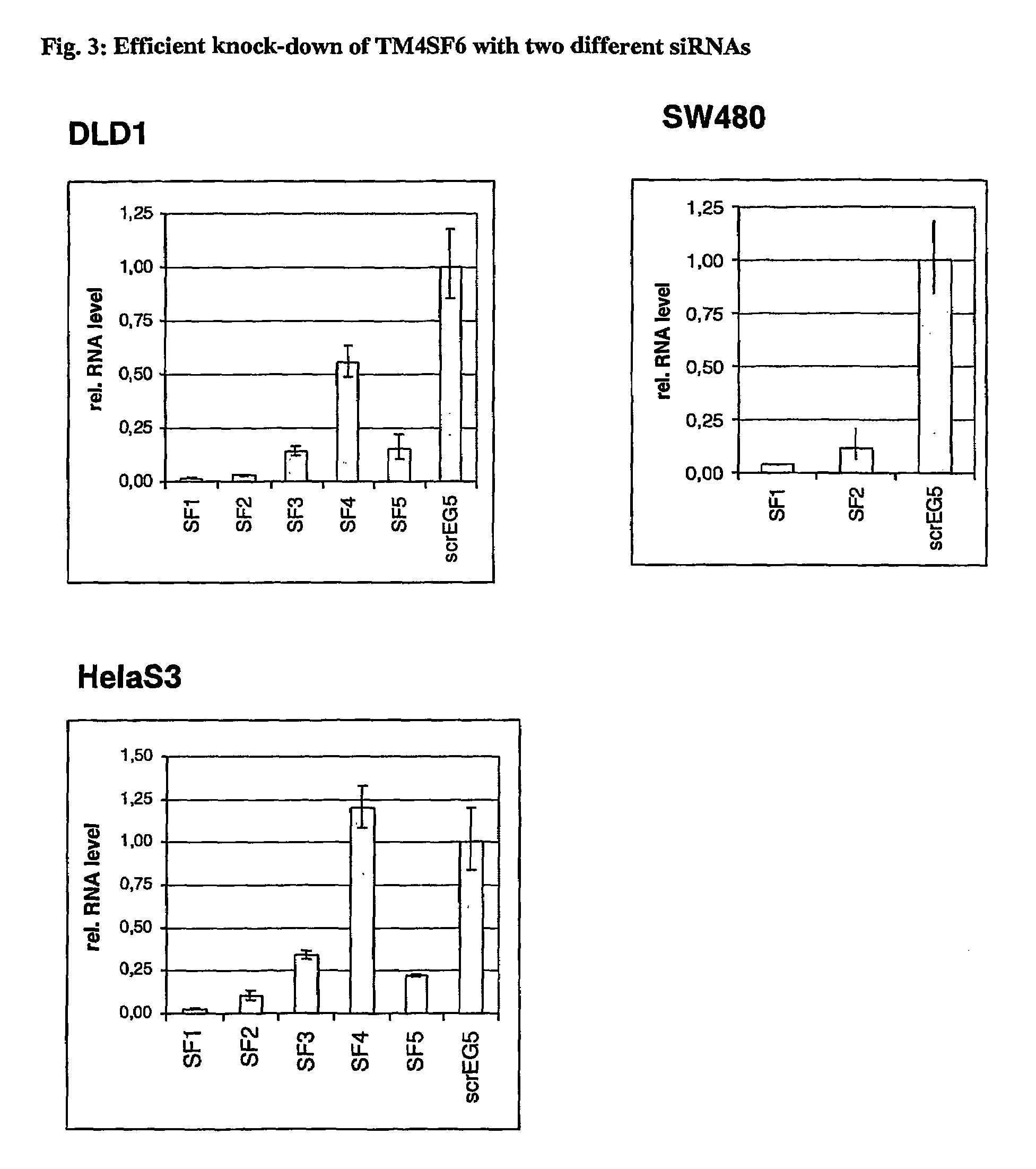Differentially expressed tumour-specific polypeptides for use in the diagnosis and treatment of cancer
a cancer and tumour-specific technology, applied in the direction of peptides, biological material analysis, drug compositions, etc., can solve the problems of physician without a clear diagnosis, too small quantities of detectable non-steroid dependent cancer cells limit detection, and cancer remains the leading cause of death worldwid
- Summary
- Abstract
- Description
- Claims
- Application Information
AI Technical Summary
Benefits of technology
Problems solved by technology
Method used
Image
Examples
example 1
RNA Isolation from Colon Tissue and cDNA Labelling Methods
[0149]For the diagnosis and treatment of various forms of non-steroid dependent cancers, particularly those cancers stemming from the neoplastic transformation of epithelial cells, the identification of disease-specific molecular markers is of utmost importance. A prerequisite for the successful identification of molecular-based differences between tumour tissues and those isolated from healthy individuals lies in the comparative transcriptomic analysis of differentially regulated genes in isolated epithelial cells from both healthy and tumourigenic tissues.
[0150]For this purpose, tissue samples were collected from colon cancer patients at varying stages of the disease, together with healthy colon tissue taken from a distant site (sample set). Tissue samples were collected from both male and female patients of varying ages at hospitals in Cottbus (Carl-Thiem-Klinikum Cottbus, Chirurgische Klinik, 03048 Cottbus, Germany), Magd...
example 2
Data analysis using Rosetta Resolver (Rosetta Inpharmatics. Kirkland, Wash.)
[0154]The expression of genes encoding plasma membrane or plasma membrane-associated proteins was investigated using the Rosetta Resolver platform (Rosetta Inpharmatics. Kirkland, Wash.). Using the publicly available LocusLink database (NCBI), the gene names and database identifiers for all genes encoding known plasma membrane or plasma membrane-associated proteins were extracted can located to their corresponding feature identified on the Human-1 cDNA Microarray (Agilent Technologies, USA). At the time of the investigation, of the 1480 known plasma membrane or associated proteins entered in LocusLink (NCBI), the coding sequences of 1147 of these genes were present on the cDNA arrays used. These 1147 genes were combined in a bioset within Rosetta Resolver (Agilent Technologies, USA) and their expression in 15 colon samples (tumour and healthy) was analysed. Protein-encoding genes that were of particular inte...
example 3
Detection of Differential Gene Expression in Patients for Diagnostic Purposes
[0155]The expression pattern of a immunogenic membrane proteins of the invention protein can be analyzed by real-time, quantitative RT (reverse transcription)-PCR (polymerase chain reaction) (reference). Briefly, the total RNA from a minimum of 20 tumour and non-tumour pairs (isolated epithelial cells) of the tissue of interest and 3-4 different cell lines (controls for intra-assay variability) is reverse transcribed in triplicate using random hexamers and then amplified in parallel by real-time quantitative PCR in the presence of SYBR Green I using a pair of primers specific for the sequence of interest. These primers were designed using Applied Biosystems' Primer Express 2.0 software; they should span an intron to avoid the detection of contaminating DNA, and should not be complementary to any other sequence of the human genome as detected doing a BLAST search. As an endogenous reference for the normalisa...
PUM
| Property | Measurement | Unit |
|---|---|---|
| Current | aaaaa | aaaaa |
| Composition | aaaaa | aaaaa |
| Biological properties | aaaaa | aaaaa |
Abstract
Description
Claims
Application Information
 Login to View More
Login to View More - R&D
- Intellectual Property
- Life Sciences
- Materials
- Tech Scout
- Unparalleled Data Quality
- Higher Quality Content
- 60% Fewer Hallucinations
Browse by: Latest US Patents, China's latest patents, Technical Efficacy Thesaurus, Application Domain, Technology Topic, Popular Technical Reports.
© 2025 PatSnap. All rights reserved.Legal|Privacy policy|Modern Slavery Act Transparency Statement|Sitemap|About US| Contact US: help@patsnap.com



